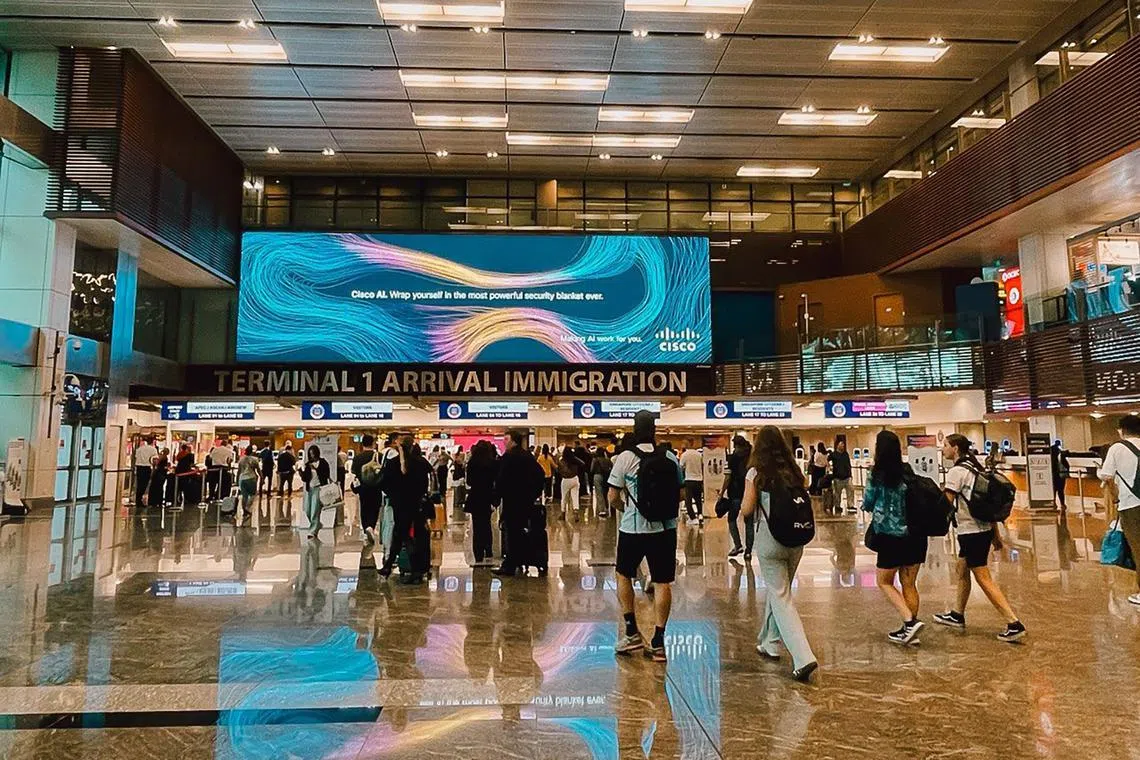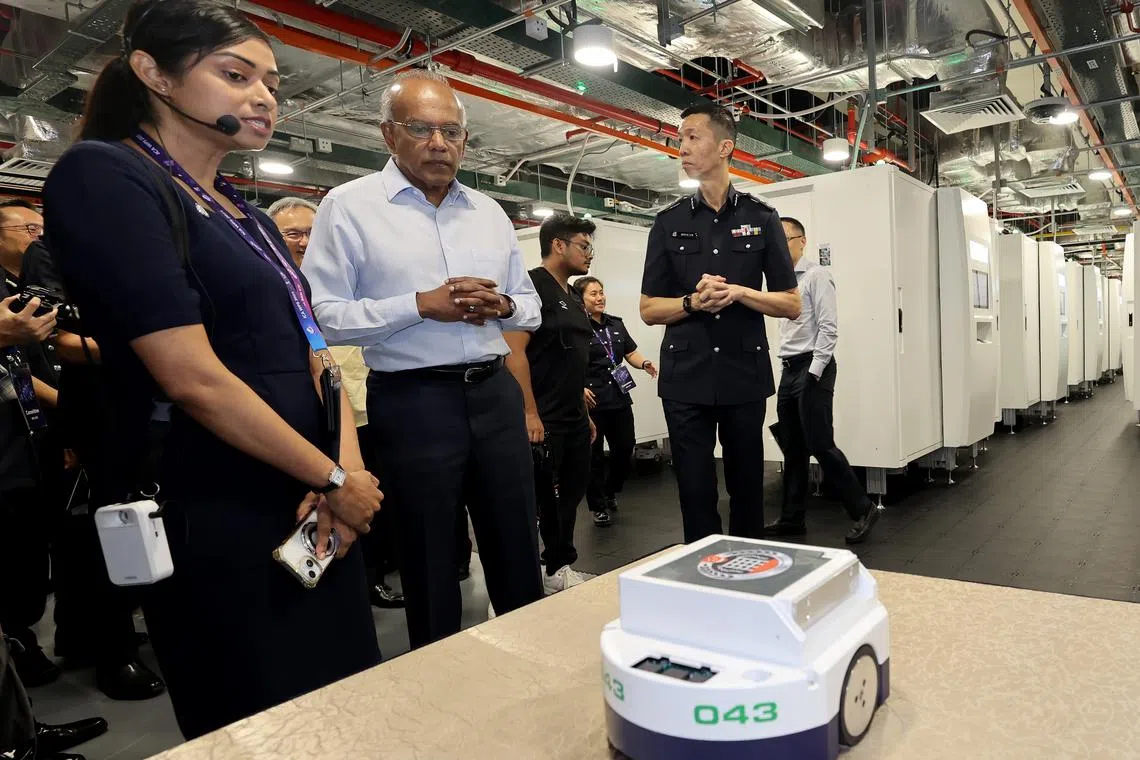No entry: ICA to bar high-risk, undesirable travellers from boarding S’pore-bound ships, flights
Sign up now: Get ST's newsletters delivered to your inbox

As at June 30, ICA said some 93 million travellers have cleared immigration without needing to present their passports.
PHOTO: ST FILE
Follow topic:
- Singapore's Immigration Act allows ICA to issue "no-boarding directives" (NBDs) to prevent high-risk travellers from boarding air or sea transport into Singapore. Fines for non-compliance reach $10,000.
- ICA enhancements and new technologies, including passport-less clearance, have reduced clearance times and increased the number of foreigners denied entry by 43%.
- ICA is expanding technology like automated passenger clearance systems (APCS) and integrated robot document management while digitising services to manage rising traveller volumes.
AI generated
SINGAPORE – High-risk or undesirable travellers who pose a health, security or immigration threat to Singapore will soon be denied the chance to board air or sea transport to travel here.
The Immigration and Checkpoints Authority (ICA) will be able to issue no-boarding directives (NBDs) to transport operators to prevent such travellers from boarding ships and flights bound for Singapore.
ICA plans to roll out the NBDs to prevent arrivals at air checkpoints from 2026, and at sea checkpoints from 2028.
Transport operators that fail to comply with an NBD can be fined up to $10,000.
The move comes in the wake of the Immigration (Amendment) Act, which came into force on Dec 31, 2024.
An initial plan, first reported in 2023
Bus operators with routes across the Causeway had told The Straits Times in 2023 that the plan to submit passenger information in advance to ICA could be difficult to implement
On July 31, 2025, ICA said that while collecting passenger and crew information in advance has been the norm for airline and ship operators, such information is generally not readily available at land checkpoints.
Meanwhile, enhancements to Singapore’s border security, including through new profiling and detection capabilities, have allowed ICA to identify more high-risk travellers before their arrival here.
This has translated into a 43 per cent increase in the number of foreigners refused entry into the Republic in the first half of 2025, compared with the same period in 2024
People who can be denied entry include those who had been previously barred from entering Singapore after being convicted of certain crimes.
On July 31, Home Affairs Minister K. Shanmugam attended the official opening of the ICA Services Centre (ISC) in Crawford Street. The centre, which began operating in April, is adjacent to the previous ICA building.
There are plans for that building to be used as ICA’s corporate office after renovations are done.
Mr Shanmugam, who is also Coordinating Minister for National Security, said ICA’s transformation comes at a time of increasing traveller volumes across the nation’s borders.
He pointed out that traveller volumes through Singapore’s checkpoints rose to 230 million in 2024, compared with the 197 million who passed through the Republic’s borders in 2015.
Mr Shanmugam said traveller volume is expected to increase further with the Johor Bahru-Singapore Rapid Transit System Link that is set to be operational in December 2026; Changi Airport Terminal 5 that is slated to open by the mid-2030s; and the expansion of Woodlands Checkpoint over the next 10 to 15 years.
He said: “But the limitation is that ICA’s manpower cannot grow indefinitely, so we have been drawing more on technology to cope with this demand and to really navigate the more complex security environment.”
To that end, ICA said it has achieved its vision to transform checkpoint clearance operations by becoming among the first border agencies in the world to implement passport-less immigration clearance. This was part of the authority’s New Clearance Concept
All travellers to and from Singapore can now clear immigration in an automated, passport-less process. This involves a facial or iris biometric scan at air and sea checkpoints, or clearance using a QR code for those travelling through land checkpoints.
ICA said that as at June 30, some 93 million travellers have cleared immigration without needing to present their passports.
Mr Shanmugam said the implementation of QR code clearance has been a game changer for those travelling through Woodlands and Tuas checkpoints, with clearance time being reduced by up to 30 per cent from before.
ICA is also planning to roll out its Automated Passenger Clearance System (APCS) at Tuas Checkpoint for those travelling in cars, motorcycles and cargo vehicles by end-2026, without the need to use counters manned by officers.
The authority said the automated process will allow it to operate more efficiently.
The APCS will be implemented at Woodlands Checkpoint at a later time.
ICA said around 95 per cent of its services have gone digital, and more than 95 per cent of the public are submitting their applications online.
Superintendent Kalaivanan Pannerchilvam, deputy director of customer operations at ICA, said: “A key feature of the ISC is the self-collection kiosks, where eligible customers can collect their passports and identity cards via these kiosks any time within the date of appointment.”
Those using the kiosks will need to input their personal identification information and complete iris verification before collecting their documents.
Customers can collect both their passports and identity cards on the same day in one transaction at the kiosk.

Coordinating Minister for National Security and Minister for Home Affairs K. Shanmugam viewing part of the integrated smart document management system at ICA Services Centre’s official opening on July 31.
PHOTO: LIANHE ZAOBAO
The self-collection kiosks are part of the ISC’s integrated smart document management system, which was launched in July.
The retrieval and delivery of documents, previously managed by ICA officers, are now done by robots.

